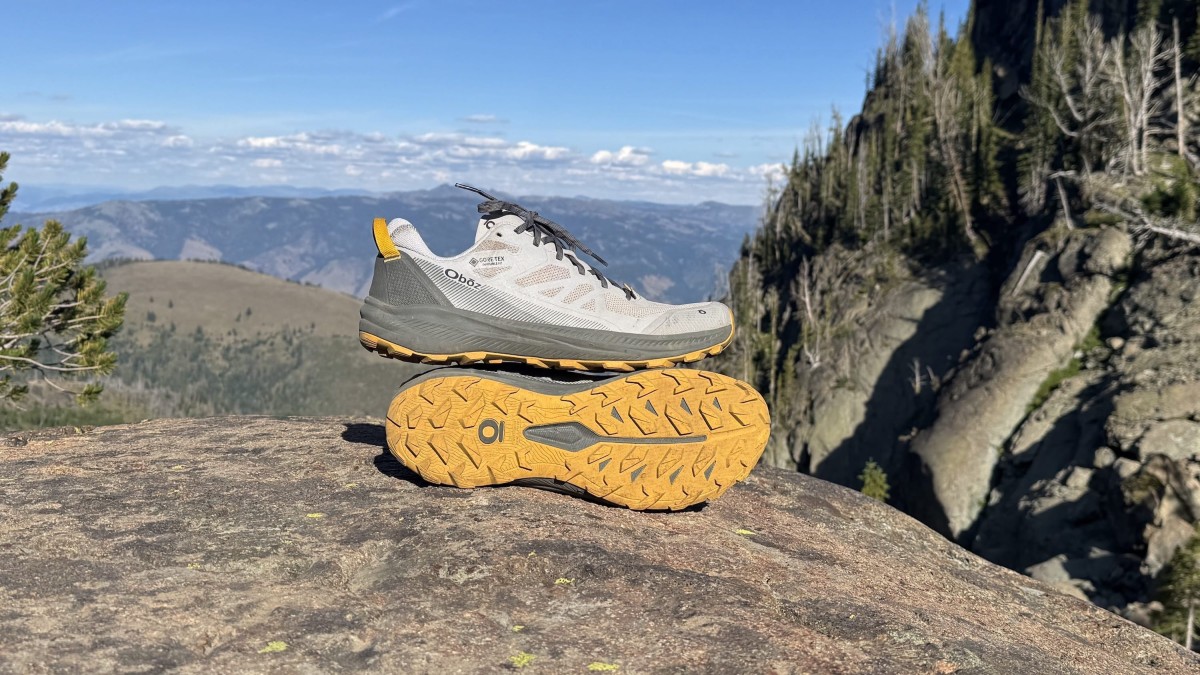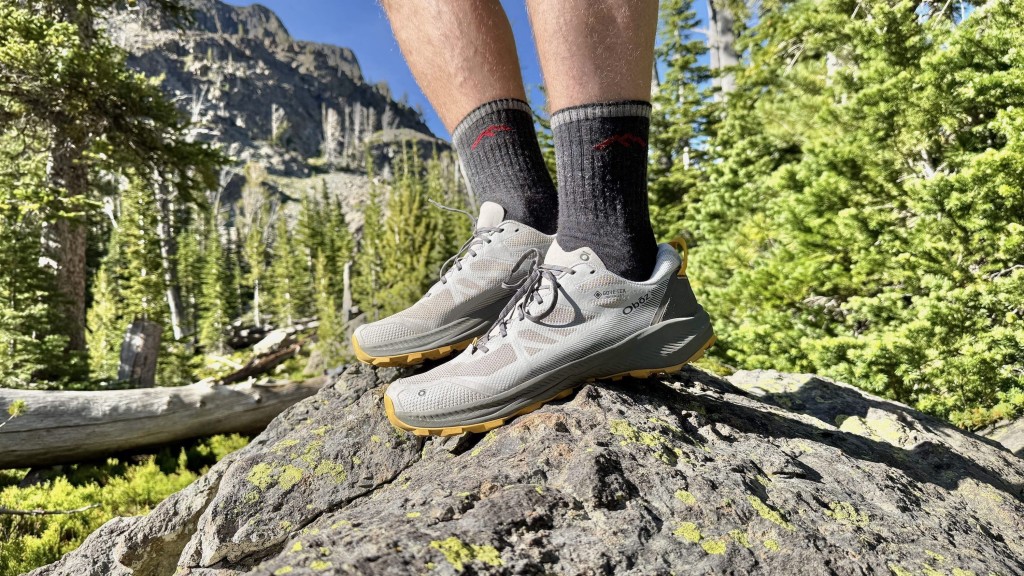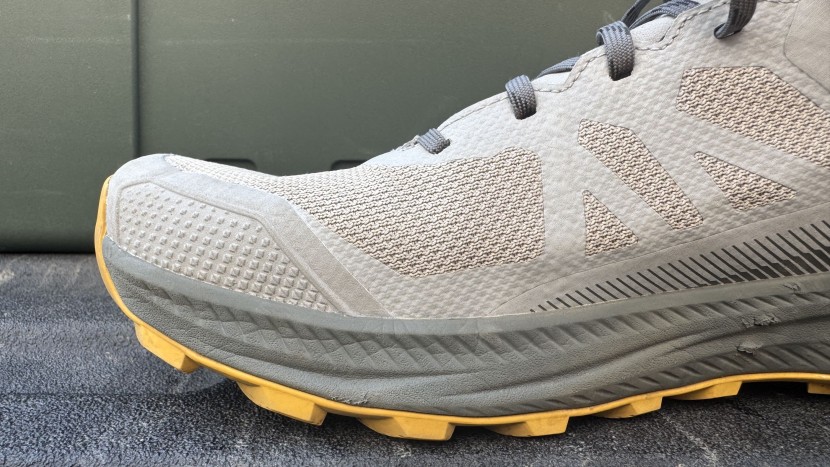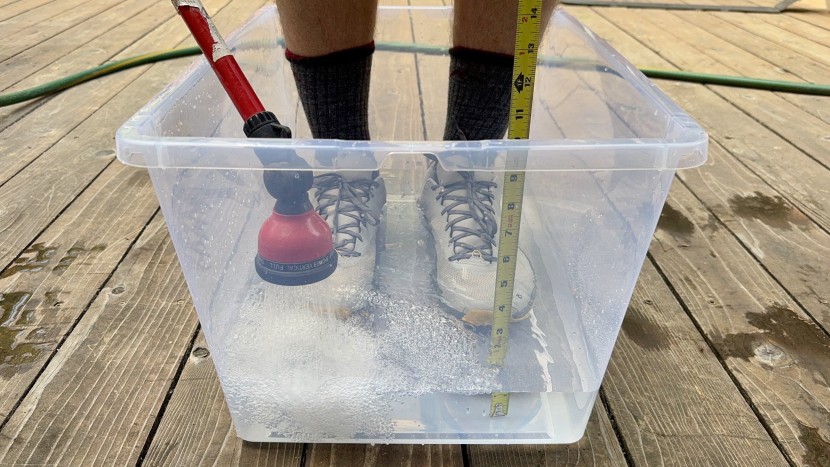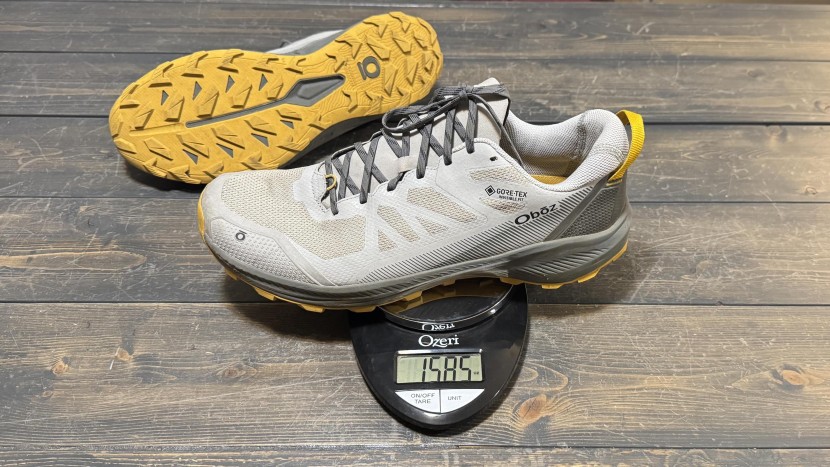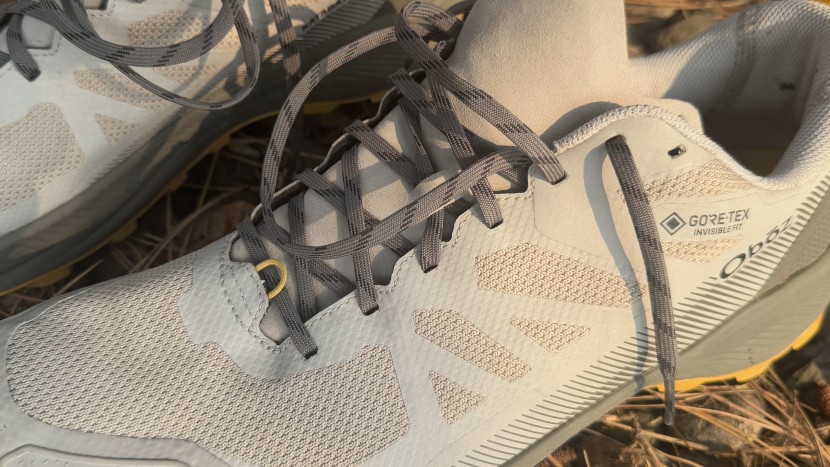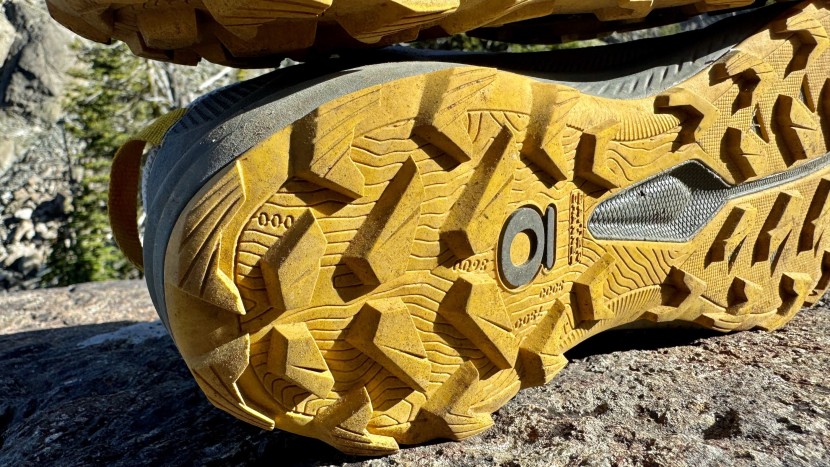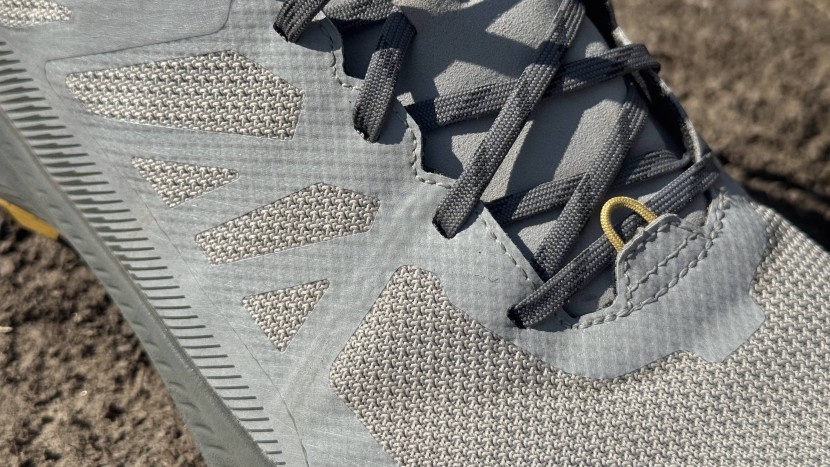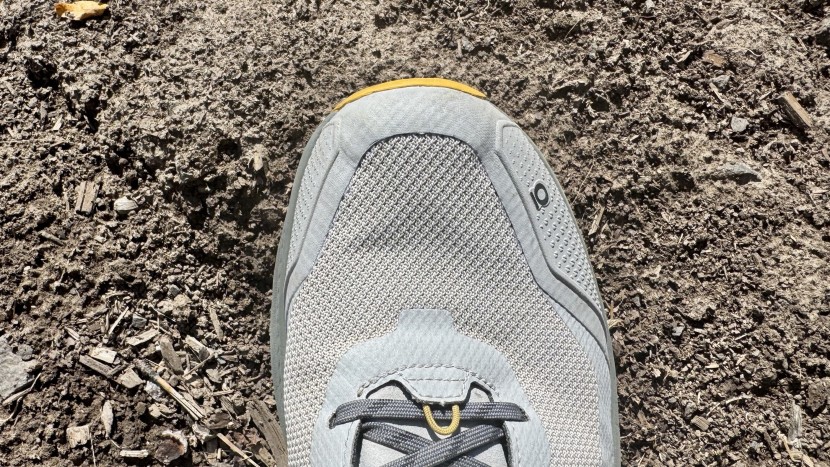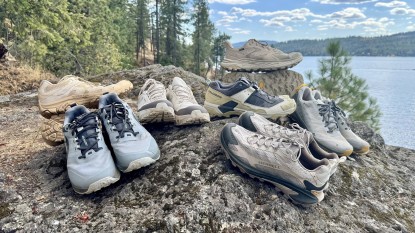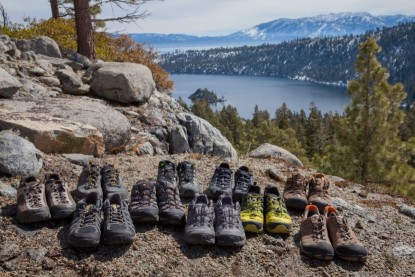
Our Verdict
Our Analysis and Test Results
As a relatively small company based out of Bozeman, Montana, Oboz is competing against many brands that have been around longer and generate much more revenue. With that in mind, when we first tried on the Oboz Katabatic LT Low GTX, we were pleasantly surprised by the foot-hugging fit and meticulous build quality. Once we got a pair out on the trail, our surprise changed into childlike delight. How so? The cushion is outstanding, letting us hop among boulders in the Idaho mountains with near impunity. Similarly, the trim, lightweight shape never caught on forest twigs or bounced off rocks on tight, twisty mountain trails. With its waterproof membrane, this shoe can do most everything well.
Comfort
For such a slim build compared to many of today's cushy hiking shoes, the Oboz Katabatic LT Low GTX wowed us with its impact absorption. While the forefoot cushioning is very good, we're particularly impressed with the cushion under the heel. Instead of throwing a thin, bland insole, Oboz is one of the few manufacturers to utilize a more structured insole with increased foam density around the perimeter of the heel cup. It seems to help keep the heel secure, keep the natural padding in your heel centered over the shoe, and reduce heel slip while improving stability. The result is a springy ride over everything from flat-packed dirt trails to alpine granite.
The toe box is roomy with decent overall volume. But we must say, the portion of the upper just in front of the laces curves down, giving some tactile feedback to the tops of our toes. We like this feeling and believe it helps make the shoe feel connected, almost wrapped, to our feet. If you need both width and height in your toe box, though, this isn't the shoe for you; Oboz does offer a wide version, too. Overall, this is a great lightweight shoe with a low swing weight that lets us cover miles off trail, stepping over deadfalls and boulder hopping, without — at the end of the day — feeling like we're lifting shoes made of lead. If you're the kind of hiker who can't stay on the well-trodden trail, this is the shoe for you.
Support
With an 8mm heel-to-toe drop, which is 20% less than the 10mm drop we see in many hiking shoes, the Katabatic LT Low feels extra surefooted on the ground. Even though this is a low-cut shoe with no ankle support, the collar below the ankle and around the heel uses somewhat dense padding to create an increased sense of stability. In some ways, we want to compare these to lightweight trail runners, but they feel a bit stiffer with a flatter sole. The rock plate shank is surprisingly stiff when we try to torque the shoe. While we could cruise in these shoes, the heel-to-toe transition errors more toward fast hiking than running.
The synthetic upper and lacing system does a great job of snugging over our forefoot, letting us climb and descend at any angle without fear of our feet stretching the sidewalls out over the soles. Often lightweight shoes lack upper support, but these kept our feet on the footbed even on the steepest rocks and dirt hillsides we explored to push the stability of these shoes to their limits.
Traction
The Oboz Trail Tread Eco rubber sticks to granite better than most shoes we've tested, letting us climb up onto lakeside boulders on high mountain lakes with confidence. Better yet, while focusing on the water while fly fishing for Idaho cutthroat trout, one tester was able to navigate rocky shores without needing to pay much attention to foot placement when wearing the Katabatic LT Low.
The tread pattern is well-spaced and aggressive, so it's able to bite through loose dirt and rocky gravel. In mud, the treads tend to clear quickly, and we never lodged any rock or stick in between the treads. Performance on wet rock is slightly above average, so you'll need to slow down in wet weather.
The only real drawback to this shoe design for off-trail travel is that it's not structured enough to let you bite into loose material when side-hilling across steep slopes. You'll have to match the slope with the full tread pattern to navigate, which isn't exactly hard, but it does mean you need to have flexible, strong ankles to manage it effectively.
Water Resistance
The Gore-Tex Invisible Fit waterproof membrane in the Katabatic LT Low GTX does its job and feels like a dream doing it. Morning hikes with dew are no match for these shoes, and you can walk in a stream for hours without worry, as long as you don't step deep enough to flood over the relatively low heel collar.
On one hot summer hike into a mountain lake to fish, one tester weighed taking a non-waterproof lightweight shoe vs the waterproof Katabatic, ultimately choosing the Katabatic. After wearing the Katabatic, he appreciated being able to step in the water without soaking his socks because just that little bit of extra space on the shoreline made unhooking and releasing fish easier and faster — a win for the fish and the fisher. When we think there's even a small chance of water, we recommend erring toward waterproof hikers.
Weight
Our large size 14 test pair weighed in at 1.97 pounds, less than 1 pound per shoe! For a waterproof shoe with a relatively protective upper, this is an impressively light shoe. The Oboz Katabatic LT Low GTX is the opposite of clunky.
While such a lightweight shoe is great for hiking, it doesn't provide the support needed for carrying a heavy backpack very far. We could see taking these shoes on short overnight backpacking trips with light packs, but we don't recommend them for weekend trips for anyone but the most experienced backpackers who know exactly what they want and need.
Durability
We're impressed with the durability so far. The tight mesh weave on the upper seems to resist scratches and pokes from sharp sticks and brush, while the generous hot-melted TPU overlays act like armor against rock scrapes. The toe bumper is particularly lightweight and protective — it has extra stiff and burly sections along each side where glancing blows to trailside rocks tend to occur most.
The only durability factor that gives us pause is the softness of the rubber compound in the tread. With relatively few lugs, we can see a situation where the tread might wear down faster than some competitive shoes: If you plan to cover a lot of ground on rocky trails, that abrasion might round off your lugs faster than average. Even so, this likely won't affect traction on dry granite for quite some time, but more rounded lugs won't be able to bite as deeply and easily into loose forest duff. Still, if you like to explore off-trail and climb and scramble around, any premature wear might be worth all the fun you have along the way.
Should You Buy the Oboz Katabatic LT Low GTX?
If you tend to pass people on the trail and like to cruise at mile-gobbling clips, the lightweight Oboz Katabatic LT Low GTX might make you feel more agile than ever. Similarly, if you're constantly leaving the trail to explore new views and climb around boulders just for the pure joy of it, we're hard pressed to recommend a better option. We're big fans of the Katabatic LT Low.
What Other Hiking Shoes Should You Consider?
Of course, there are other great hikers that will work well for those who like to cover a lot of ground. The extra-cushiony Hoka Anacapa 2 Low GTX weighs a bit more, but it's just as durable, quite comfortable, and has a cushier sole that excels under long strides. If you're looking a more technical option that's bites on sidehills a bit better, the Salomon X Ultra 5 Gore-Tex is another lightweight powerhouse that excels off trail.


